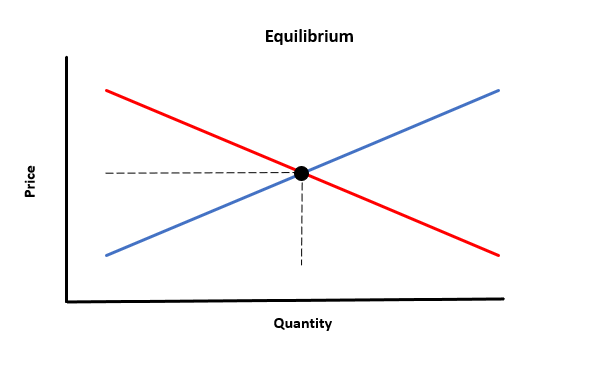https://www.dailyfx.com/education/support-and-resistance/forces-of-supply-and-demand.html
The primitive forces of capitalism rule markets like the laws of gravity. Buyers and sellers provoke a battle to find a happy medium agreement in every financial market. As prices dance around on charts, traders are often looking for reasons to explain price movements however, the underlying source of price movement boils down to the relationship between supply and demand.
Generally, positive news means increased demand and lessened supply – equating to higher prices. Negative news usually spells lower demand and increased supply.
This article will outline the following foundational aspects of supply and demand:
- What is supply and demand?
- Supply and demand zones
- Supply and demand in the forex market
- How does supply and demand work?
What is supply and demand?
Supply and demand is the relationship between buyers and sellers that is used as a measure for price determination in financial markets. The forces of supply and demand interact to affect an equilibrium price between buyers and sellers whereby the quantity of demand equals the quantity of supply.
What are the laws of supply and demand?
‘Supply’ is purely the amount available, while ‘demand’ is the amount that is desired. The graphs below indicate the visual aspect of supply, demand and equilibrium respectively.
Supply: the relationship between price and quantity

Demand: the relationship between price and quantity

Equilibrium: the most efficient price at which quantity demanded equals the quantity supplied:

Supply and Demand Zones
Supply and demand zones allow traders to gain a perception into the current financial markets, and these are illustrated in the charts below.
It is noticeable that supply and demand zones cover a broader area as opposed to support and resistance levels. These broader zones provide more reliable price regions than a single line/level which can be a better gauge for future price movements.
The supply zone below shows an area clustered by sellers because price tends to ‘bounce’ lower off this demarcated zone. This quick price movement off these zones characterizes the features of supply and demand zones. The demand zone exhibits the same attributes as the supply zone in the opposing direction – demand zone mimics a broad area of support.


Supply and Demand in the Forex Market
Supply and demand within a simple vegetable market is not all too dissimilar from that which takes place every day in the forex market. In some cases, these forces are moving at such high velocity that new traders can have difficulty understanding the granularity of the details.
The forex market is the largest financial market in the world because of the heavy demand behind the traded assets. Currencies are the basis for the world’s economy and whenever one economy wants to trade with another economy (provided different currencies are used) an exchange will be required.
How does supply and demand work?
In a nutshell, supply and demand works by analysing the quantity of buyers and sellers within the forex market.
How do supply and demand influence market price?
Imagine that the South African Reserve Bank (SARB) enacts an interest rate change. An entire chain reaction will be set in motion due to the forces of supply and demand. When rates increase, forex rollover payments also increase.
This means that investors that are holding the trade open at the specified rollover time (varies from country to country) will receive a higher rate of interest than they would have previously - incentive has just increased.
All else being equal, more traders would want to buy; and fewer traders would want to sell as the opportunity cost of selling (the rollover payment) has just gotten more expensive.
Supply and demand forex – USD/ZAR daily chart:

As you can see, price aims to find a comfortable point and will increase until there are no more buyers willing to pay that price. At this point, sellers outnumber buyers, and price will respond by moving down.
After price has moved down far enough (red circle) traders will come back into the picture, remembering in the increased interest rate and the additional rollover payment that can be received from holding a long ZAR position, and this lower price presents a ‘perceived value.’
As additional buyers enter the picture, price will move up to reflect this increased demand.
This is the process of price attempting to find its fair value as it takes place on many different time frames in every market in the world.
For more information, read out in-depth guide to trading supply and demand.
No comments:
Post a Comment